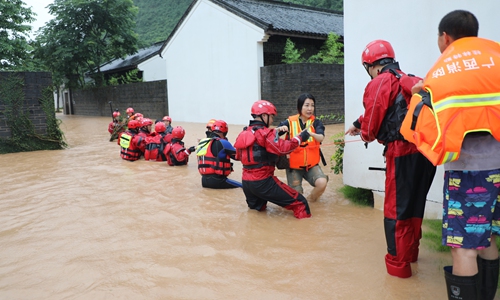
Flooding can occur due to heavy rainfall, storm surges, or the overflow of rivers and lakes. It can lead to devastating consequences, including property damage, loss of belongings, and even life-threatening situations. A foolproof flood emergency response plan can minimize the risks and protect your home from the destructive forces of floods.
Creating an Emergency Kit
A flood emergency response is a crucial component of any flood preparedness plan. It should include essential items such as non-perishable food, drinking water, flashlights, batteries, a first aid kit, important medications, blankets, a portable radio, and a waterproof container for important documents. Store the emergency kit in a readily accessible location.
Developing an Evacuation Plan
In a flood, having a well-defined evacuation plan can save lives. Identify safe evacuation routes and establish meeting points for your family members. Assign responsibilities to each family member, including pet care and shutting off utilities. Practice the evacuation plan regularly to ensure everyone is familiar with the procedures.
Securing Your Home’s Infrastructure
To protect your home from flood damage, securing its infrastructure is important. Ensure that your foundation is structurally sound and free from cracks. Install check valves in your plumbing to prevent floodwater from backing into your home. Raise electrical outlets, switches, and appliances above the expected flood level. Additionally, reinforce doors and windows with flood-resistant materials.

Installing Flood Prevention Measures
Preventing floodwater from entering your home is crucial. Consider installing flood barriers around vulnerable areas, such as sandbags or flood panels. Waterproof your basement and seal any cracks in the walls. Install a sump pump to remove excess water. Elevate your appliances above the flood level, including water heaters and furnaces. These measures will minimize the risk of water damage during a flood.
Insurance Coverage for Flood Damage
Obtaining flood insurance is a wise investment to protect your home and belongings. Standard homeowners’ insurance policies often do not cover flood damage. Contact your insurance provider to discuss the available options for flood insurance. Ensure that you understand the policy’s coverage, deductibles, and exclusions.
Taking Care of Important Documents
Important documents like birth certificates, passports, and insurance policies can be easily damaged in a flood. Store these documents in a waterproof and fireproof safe, or consider digitizing them and keeping backups secure. This ensures that you can quickly access essential documents after a flood.
Maintaining Regular Home Inspections
Regular home inspections are vital for identifying potential vulnerabilities and taking preventive measures. Check your roof for loose or damaged shingles, as they can allow water to seep in during heavy rain. Clean and maintain your gutters and downspouts to ensure proper water drainage. Inspect your foundation, walls, and windows for cracks and leaks. Address any issues promptly to prevent further damage.







